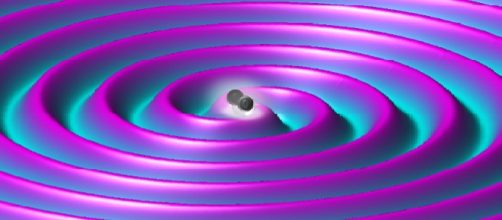Gravitational waves from the merging of two black holes
Two massive objects 30-36 times as massive as the sun circling at half the speed of light from each other merged into a single gigantic black hole. The collision created cosmic ripples (gravitational waves) that travelled for billions of years, finally reaching the earth, allowing scientists to detect gravitational waves for the first time.
What are gravitational waves?
Gravitational waves are ripples that form in the structure of space-time and are caused by colliding black holes, merging neutron stars, a spinning star or supernova, which are some of the greatest energetic events in the universe.
These waves have been predicted by Einstein’s general theory of relativity; however, they had not been detected, until 1974, when two scientists discovered a binary pulsar.
This discovery led scientists into the study of the binary star´s period. The binary system was found to be getting closer to each other as predicted by Einstein´s general relativity. During the last 40 years since that discovery, the system of stars have been observed and the findings agree 100% with general relativity.
On 11 January 2015 scientists finally confirmed the detection of gravitational waves by the Laser Interferometer Gravitational Wave Observatory (LIGO). The waves were produced by two colliding black holes around 1.3 billion years ago.
How are gravitational waves detected?
When the two massive black holes merge into a single black hole, the merging produce gravitational waves that travel in all directions throughout the universe. This waves have travel through space for 1.3 billion years, so by the time they reach the earth, they have become weaker, and can only be detected by a special type of equipment.
Gravitational wave interferometer
LIGO is a sensitive gravitational wave detector consisting of two long arms 4km (2.5 mile) long, positioned in the shape of an L with beam lasers on each end of them. Laser beams bounce back and forth inside the arms. When something like a wave makes the arms unequal in length, it causes a mismatch in the beam patterns.
From the interference, scientists can measure the relative lengths of the arms to about 1/10,000 the width of a nuclear particle, which allows to detect an occurring gravitational wave. While the original gravitational waves were huge and violent, by the time they reach the earth, they have become millions of times smaller and less disturbing.

